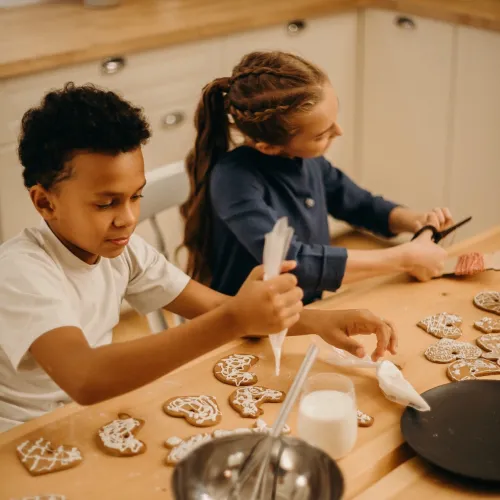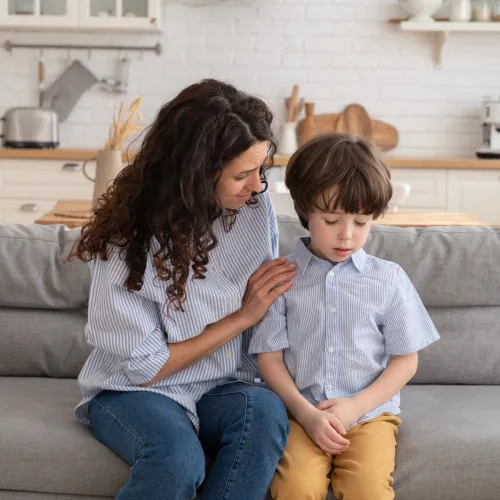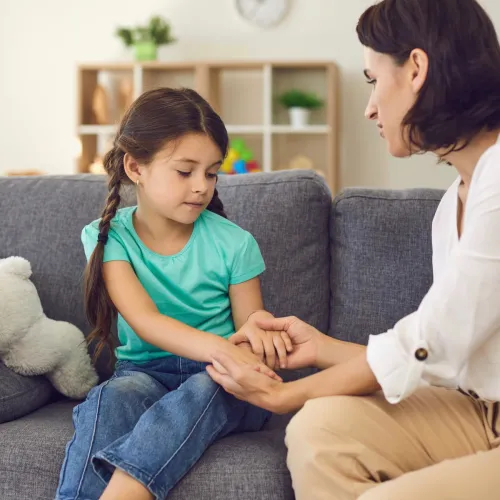Top 10 Tips – Building Kids’ Resilience In Two Homes

The journey through separation and divorce will be challenging for your whole family, yet the way that you and your co-parent handle this transition will have a big impact on how your children cope with it.
Stephanie Dobson is a Canadian Collaborative Divorce Lawyer, Family Mediator, and Founder of Up A Notch Learning, Inc., an e-learning community that provides education and resources that help to empower separating or divorcing families to thrive in two homes. What follows are her ten essential tips for building resilience in children when parenting apart.
Tip #1: Encourage open dialogue with the kids
One of the most difficult things you will have to do when you separate is telling your children. When talking with them, there are many things to consider. In my view, the most important is to ensure that the children know you’re there to talk anytime. They may have questions right away or may need time to absorb the information.
I encourage parents to observe their children over time to see how they’re doing. Depending on each child’s personality, they may need to be prompted to talk or may come to you asking questions. Be there for them when they’re ready to open up. Understanding what your children are thinking about the separation will give you golden nuggets of information to support each child.
Sometimes children need someone other than their parents to talk to – another trusted adult (a counselor, a neighbor, a religious leader, a relative). If any of your children seem to be bottling up their feelings, you may want to reach out to someone else.
A variety of books are designed for kids of all ages to help them through their journey of moving into two homes. Some explain what separation or divorce will look like; others help kids better understand their emotions.
Tip #2: Create as much consistency and predictability in the parenting schedule as possible
A parenting schedule looks different for every family. Parents may have unpredictable work schedules, which add additional scheduling challenges. However, consistency and predictability are important for children to adjust to schedules when moving between homes.
This can help children by:
- Creating reliability – to know when they see each parent.
- Feeling secure in knowing their own calendar
- Feeling in control of their environment – when so much of their life is outside of their control (decisions made by other people) – a schedule is something to count on.
Tip #3: Encourage communication when children away from one parent
As co-parents, you will create a parenting schedule when moving into two homes. Whatever the time split, it’s important for children to stay connected with both parents even outside of in-person time.
Kids are adept at using technology – why not extend this to each parent. Create opportunities to communicate with the other parent, in a way that enhances their relationship.
There are tons of ways to do this – a video-messaging app, texting, phone calls, and even through co-parenting apps that have a “child account”.
If this communication is infrequent, try scheduling specific times to communicate – something like every week on Tu/Th/Sa at 6:30 p.m. or Wednesdays at 6:00pm, or otherwise.
Tip #4: Never use children as a messenger
This one is pretty self-explanatory - communication should always be directly between parents. Kids could feel in the middle between their parents and any negative feedback by the receiving parent would be very upsetting to the child. “Mom told me to tell you…” can result in “Well, you tell your mom…” – kids can feel stuck and can carry those negative emotions with them.
Also, consider the reliability of the message being transmitted – that’s a huge responsibility for a child to get it right. This principle extends to passing physical items between parents, such as child support. The exchange should be done directly between the parents or electronically.
Tip #5: Maintain a quality relationship between children and each parent
Allow the children to love both parents equally, avoid kids having to take sides. Quality of relationship doesn’t always have to equate with quantity of time spent together. A quality relationship is defined by things like:
- Engaging with each other regularly
- Being actively involved and engaged with things important to them – activities, school, their interests
- Participate in day-to-day activities – music practice, sports practices
- Be available without distractions
- Eating together at the dinner table without electronics
- Creating special time together – doing things they like to do – reading or crafting or playing video games – embrace their interests
Remember – the above ideas can be carried out in person or at a distance.
Tip #6: Learn to communicate effectively as co-parents
Effective communication is a learned skill and is the foundation of every co-parenting relationship! There’ll be much organizing and arranging to be done and better communication means a smoother co-parenting experience.
My clients identify that communication was one of the main stressors of their relationship – so with the separation of the homes, the communication becomes even more difficult.
I recommend that you establish the method of communication for various topics with your co-parent. Certain topics may be good for texting, others may be better verbally or by email. OurFamilyWizard is an app and a great way to organize communication for two-home families. The messaging function of this app is especially helpful in maintaining good records of messages and a useful double-check with the “tone meter” feature.
Tip #7: Ensure consistency between households
We looked at consistency of parenting schedules in Tip #2, but here’s another take on consistency between two households. Children thrive on consistency in so many ways.
The more consistent each home’s routine, the easier time children will have settling into each parent’s home.
This consistency will also avoid children favoring one household over the other, especially when one house is more lenient.
Here are some examples:
- Bedtimes
- Electronics rules – screen time limits, curfew
- Homework rules
- Electronics at mealtime
- Nutrition guidelines
- Chore expectations
- Hygiene
- Discipline
Tip #8: Both parents liaise with all professionals who surround the children
There will be many professionals surrounding your children, helping them along as they grow and develop. Professionals like:
- Doctors
- Dentists
- Counsellors
- School Administrators, teachers, and other education professionals
It’s important to have both parents involved first-hand where possible to understand and learn about recommendations which may impact your children significantly. This co-involvement can be accomplished by attending meetings or appointments, receiving notifications directly, or having access to an online portal for information. This will help so both can ask questions directly and avoid co-parent conflict regarding differing opinions or interpretations of the professionals’ advice.
Tip #9: Choose an out-of-court negotiation process
Negotiation process matters! We know that co-parent conflict is toxic for children’s development and it is important to be as constructive as possible during your separation & divorce negotiations.
Typically the adversarial process (divorce court) can escalate the conflict between separated co-parents. By choosing an out-of-court divorce process like Mediation or Collaborative Divorce, you are choosing a process that bridges the gaps – rather than widening – between parents. Each is intended to help minimize or reduce the conflict between parents.
This reduced conflict is good for kids!
Tip #10: Reduce the conflict between co-parents
This tip continues from Tip #9. Evidence shows that toxic stress, which can be caused by high-conflict parents or households, can be detrimental to children’s brain development. Children who are exposed to toxic stress will be at greater risk of developing emotional, social, and behavioral issues.
The post-separation or divorce interactions should be business-like and cordial. Get out of the spouse-brain and into the parent-brain. Karen Bonnell, renowned author and mediator, describes the co-parents’ job to be CEO’s (Co-parent Executive Officers) and to operate like you’re running a business together – the business of parenting. The ultimate goal is the effective raising of your children to become well-adjusted, high-functioning members of society. The best chance for your children’s future is to be raised in two healthy homes with co-parents working together effectively.







